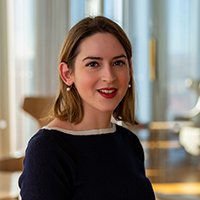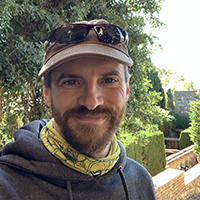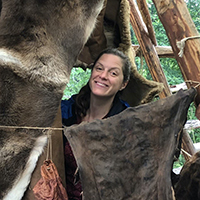Team members
PI Elsa Yvanez

- UCPH profile: Elsa Yvanez
- ORCID: 0000-0002-0934-8367
An archaeologist specialised in the textile production of the ancient Nile valley, in the chaine opératoire and economic significance of spinning and weaving, as well as in the use of textiles for clothing and burial.
Elsa Yvanez is associate professor of textile archaeology at the Centre for Textile Research, Saxo institute, at the University of Copenhagen (UCPH). From 2022, she is leading the Fashioning Sudan. Archaeology of dress practices along the Middle Nile project with the support of the European Union’s Horizon Europe programme (ERC Starting Grant 101039416).
Dr. Magda M. Wozniak

- UCPH profile: Magda M. Wozniak
- Academia.edu
- ORCID: 0000-0003-3551-2762
An archaeologist specializing in the textile production and dress practices in the Nile Valley (Egypt and Sudan).
Dr. Wozniak holds a PhD in Archaeology from Paris-Sorbonne University and was trained in textile analysis by Gillian Vogelsang-Eastwood at the Textile Research Centre, Leiden and later by Marie-Hélène Guelton, CIETA, Lyon.
She promotes the integration of textile studies as a standard scientific discipline, fostering collaboration with colleagues working in optical microscopy and analytical chemistry. Dr. Wozniak also collaborates with museums in organizing topical exhibitions focusing on textiles and to raise awareness of the importance of textiles in cultural heritage.
With the project’s team members, together they will work on establishing appropriate terminology and dress categories, documenting the economic resources in textile production and consumption, in order to contribute to revealing concepts of self and common identities in medieval Nubia and help offer a more complete picture of dress practices in ancient Sudan.
Postdoctoral researcher Laura Viñas Caron

- UCPH profile: Laura Viñas Caron
- ORCID: 0000-0002-3577-0799
A biomolecular archaeologist working primarily with aDNA and proteins. Interested in understanding domestication processes and the use of animal resources beyond diet and food. Her PhD and postdoctoral research has focused on the development of domestic sheep and the use of secondary products such as wool, parchment and skins. As part of the project Fashioning Sudan, Laura will carry out the palaeoproteomic analyses of textiles and skins excavated in Sudan and Nubia and dated from the Bronze Age to the Late Medieval Period. This will provide an overview of the animal species used in garment production and will be interpreted within wider animal husbandry practices and economies.
Dr. Alistair Dickey
Alistair Dickey is an archaeologist, who specializes in the study of archaeological textiles from the Nile Valley. He brings experience of applying cutting-edge materials science methodologies to the study of archaeological textiles in both field and lab contexts. He is particularly interested in issues of materiality, exploring fibre choices, tracing thread technology development, examining societal cloth use, and re-assessing the ancient textile chaîne opératoire. Alistair is currently involved in textile research collaborations with the Metropolitan Museum of Art, the Hierakonpolis Expedition, and the TT 99 (Senneferi) project.
His specialism is built on an extensive archaeological portfolio spanning commercial, university, and museum-led archaeological field projects across several countries since 2003. As Research Associate within this project, Alistair will be conducting analyses of textiles from Nubia, excavated during the 1960s, that currently reside in Sweden. This will complement ongoing research he is carrying out on the textiles associated with the Nubian C-Group and Pan-Grave contexts at Hierakonpolis (Egypt).
Postdoc Lucy-Anne Skinner
Dr. Skinner is an archaeological leather specialist with a background in archaeological conservation. She recently completed a PhD based on ancient Egyptian and Nubian leather technology - focusing on animal provenance and hide/skin selection.
Lucy's primary focus within the Fashioning Sudan project will be the documentation and investigation of garments and adornments made from animal skins by ancient Nubians of different temporal and spatial origin; looking at animal provenance, processing and colouring techniques.
In the latter stages of the postdoc, knowledge gained through analysis and investigation will be applied to practicing experiential skin processing to recreate ancient Nubian-style leather and garment reconstructions.
Helene Forum Winther
While pursuing her Master's in Prehistoric Archaeology at the University of Copenhagen, Helene joined Fashioning Sudan as an intern. She will explore methods of data management, sampling and analysis of burial material with an emphasis on textiles and objects related to the body during this internship. She will finish by writing her Master's thesis after completing her internship
Helene's focus will be on the medieval period or around the introduction of Christianity. In order to better understand Nubian culture, religion and materiality as well as the entanglements of personal, social and structural expressions, her focus will be on late Nubian burial material.
Her interests cover a range of theoretical and methodological fields; Multidisciplinary research between the human and natural sciences, particularly between archaeology and biochemistry, and between history and archaeology; Theoretical perspectives of phenomenology, feminism, decolonization and new materialisms; Interpretations of material culture in relation to conceptions of the body and identity.
Sita Rosenbjerg Østergaard

A master student at the Royal Danish Academy, Institute of Conservation. During her studies, Sita has acquired knowledge about the preservation of archaeological and historic textiles – including the composition and properties, deterioration in different environments and identification.
Her bachelor project was a case study of a traditional Greenlandic shirt (anorak) regarding its permanent display. She used FT-IR spectroscopy and microscopy to identify the textile's fibers.
Sita will be working on the characterization of a sample set of animal fibers retrieved from archaeological fabrics as part of the Fashioning Sudan project. In order to identify the animal species, she also plans to use SEM and transmitted light microscopy to investigate the fibers. Sita also intends to assess the state of the fibers from Sudan's arid environment.
Rayan Alhag

A project coordinator and graphic designer. Rayan Alhag has worked as the coordinator for "Turath, Archeology connects", a pilot project for Sudan's national museum's first audio guide, for a duration of 3 years. The project was funded by the EU and led by the Regional French Institute in Sudan.
In her role in Fashioning Sudan, Rayan will be responsible for coordinating the general activities of the project and providing support to team members as required. With her graphic design skills, she will generate graphs and design visual materials. She will also provide editorial assistance for editing articles and books, as well as layout and figures. Additionally, Rayan will manage the project's social media accounts and website, and translate content to and from Arabic.



